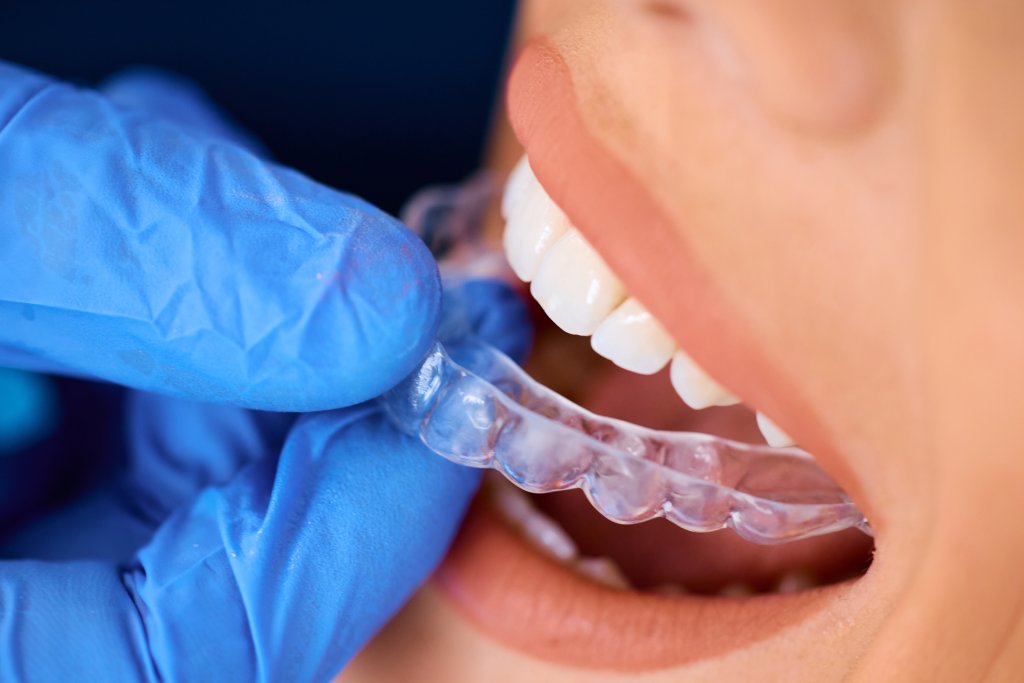Tooth decay prevention tips are vital for maintaining a healthy smile and preventing toothaches. Tooth decay, also known as cavities, is a common problem caused when bacteria in the mouth produce acids that erode the tooth enamel. The solutions are simple yet effective:
- Brush your teeth twice a day with a fluoride toothpaste.
- Floss daily to remove food particles and plaque from between teeth.
- Limit sugary snacks and beverages to reduce acid production.
- Visit a dentist regularly for cleanings and check-ups.
Maintaining good oral hygiene is essential for everyone, especially busy families seeking straightforward solutions for dental care.
I’m D.D.S. Marta Milejczyk, and I’ve been serving the Des Plaines community for many years. I focus on restorative and cosmetic dentistry, with a passion for delivering top-notch, patient-centered care. Tooth decay prevention tips are a key part of empowering patients to achieve optimal oral health and a bright smile. Let’s dig deeper into understanding tooth decay and how you can combat it.

Understanding Tooth Decay
Tooth decay is a common yet preventable dental issue, often caused by bacteria in the mouth that consume sugars and starches from your diet. These bacteria produce acids that can erode tooth enamel, leading to cavities. Here’s a closer look at the process:
The Anatomy of a Tooth
Your tooth consists of several layers:
- Enamel: The hard, protective outer layer.
- Dentin: A softer layer beneath the enamel, more susceptible to decay.
The Culprit: Plaque
Plaque is a sticky, colorless film of bacteria that forms on your teeth. When you consume sugary or starchy foods, these bacteria produce acids that begin to erode the enamel.
The Acid Attack
Here’s how the acid attack unfolds:
- Plaque forms: A mix of bacteria, food particles, and saliva.
- Acids are produced: Bacteria metabolize sugars, turning them into acids.
- Enamel erosion: These acids dissolve minerals in your enamel, creating tiny openings.
- Dentin damage: If unchecked, decay reaches the dentin, increasing sensitivity and pain.
Why Act Early?
Addressing tooth decay early prevents it from reaching deeper layers of your tooth, which can lead to infections and severe pain. Regular dental care, including brushing, flossing, and professional check-ups, is crucial in preventing decay and maintaining overall oral health.
Tooth Decay Prevention Tips
Preventing tooth decay involves simple yet effective habits that can significantly enhance your oral health. Here are some essential strategies:
1. The Power of Fluoride
Fluoride is a natural mineral that fortifies enamel against acid attacks. Use toothpaste with at least 1450ppm fluoride for optimal protection.
Tip: After brushing, spit out the excess toothpaste without rinsing to allow fluoride to continue working.
2. Brushing Basics
Brush twice daily with a soft-bristled brush, covering all tooth surfaces and focusing on the gumline to remove plaque.
3. Flossing Fundamentals
Floss daily to remove plaque and food particles from areas your brush can’t reach, preventing cavities in these spaces.
4. Diet Decisions
Limit sugary and starchy foods, opting instead for a balanced diet rich in vitamins and minerals. Chewing sugar-free gum can also help by increasing saliva production, which neutralizes mouth acids.
5. Regular Dental Checkups
Schedule regular visits to your dentist for early detection of decay and professional cleanings, which are vital for maintaining dental health.
The Role of Fluoride in Decay Prevention
Fluoride is a superstar when it comes to keeping your teeth healthy. It’s like a shield for your enamel, making it stronger and more resistant to the acids that cause decay. Let’s explore how fluoride works its magic and how you can make the most of it.
Fluoride Toothpaste
Using fluoride toothpaste is one of the simplest ways to protect your teeth. Most toothpastes contain fluoride, but make sure yours has at least 1450ppm (parts per million) for the best protection. Brush with it twice a day, and remember not to rinse with water afterward—just spit out the excess. This keeps the fluoride working on your teeth longer.
Fluoridated Water
If you’re unsure about the fluoride levels in your tap water, check with your local water provider. Bottled water often lacks fluoride, so consider this if you mostly drink bottled water.
Fluoride Varnish
For those at higher risk of cavities, fluoride varnish can be a great option. Applied by your dentist, this varnish sticks to your teeth and releases fluoride over time, giving your enamel an extra boost. It’s especially effective for children, as it can prevent about one-third of cavities in baby teeth.
By incorporating fluoride into your daily routine, you can significantly improve your tooth decay prevention efforts. Next, we’ll look at how your diet can support healthy teeth.
Dietary Habits for Healthy Teeth
Your diet plays a huge role in keeping your teeth healthy and strong. By making smart food choices, you can help prevent tooth decay and keep your smile bright. Here are some tooth decay prevention tips focused on your diet:
Sugar Reduction
Sugar is a big enemy of your teeth. When you eat sugary foods, the bacteria in your mouth turn that sugar into acid. This acid attacks your enamel, leading to cavities. To protect your teeth, try to cut down on sugary snacks and drinks. Save sweets for special occasions and always brush your teeth afterward.

Balanced Meals
Eating balanced meals is important for your teeth and overall health. Foods rich in calcium and phosphorus, like dairy products, fish, and leafy greens, help keep your enamel strong. These minerals are crucial as they help repair and rebuild tooth enamel after acid attacks.
Smart Snacking
Snacking can be harmful to your teeth, especially if you choose sugary or starchy snacks. Instead, pick tooth-friendly options like cheese, nuts, and crunchy fruits or vegetables. These foods not only satisfy your hunger but also help clean your teeth by increasing saliva production.
The Power of Saliva
Saliva is your mouth’s natural defense against tooth decay. It washes away food particles and acids, keeping your teeth clean. Chewing sugar-free gum or crunchy foods can boost saliva production, providing extra protection for your teeth.
By focusing on these dietary habits, you can significantly reduce your risk of tooth decay and maintain a healthy smile. Up next, we’ll explore how dental sealants can offer an additional layer of protection against cavities.
Dental Sealants: A Protective Barrier
Dental sealants are a simple yet powerful tool in the fight against cavities, especially for children and teenagers. These thin, plastic coatings are applied to the chewing surfaces of the back teeth, or molars, where decay is most likely to develop. Why? Because these teeth have small pits and grooves that can trap food particles and bacteria, making them hard to clean with just a toothbrush.
Cavity Prevention with Sealants
Sealants act as a shield for your molars. By covering the grooves and pits, they prevent food and bacteria from getting stuck, which significantly reduces the risk of cavities. In fact, research shows that sealants can prevent up to 80% of cavities in the first two years after application. And even after four years, they continue to protect against 50% of decay.
When to Get Sealants
Timing is key when it comes to sealants. The first set of permanent molars, often called “6-year molars,” typically appear between ages 5 and 7. The second set, or “12-year molars,” come in between ages 11 and 14. Applying sealants as soon as these teeth emerge is ideal for maximum protection.
What to Expect During the Procedure
Getting sealants is quick and painless. The process involves a few simple steps:
-
Cleaning: The dentist will clean your child’s teeth thoroughly to ensure no plaque or food debris remains.
-
Preparation: A special gel is applied to the tooth surface to help the sealant adhere properly.
-
Application: The sealant is painted onto the tooth and then hardened with a blue light.
There are no side effects from sealants, and they are safe for most children. Regular dental checkups will ensure that the sealants remain intact and effective.
By choosing to get dental sealants, you are giving your child an extra layer of defense against cavities, helping to keep their smile healthy and bright. Next, we’ll tackle some frequently asked questions about tooth decay prevention.
Frequently Asked Questions about Tooth Decay Prevention
How can I prevent cavities?
Preventing cavities starts with a solid oral hygiene routine. Brushing your teeth twice a day with fluoride toothpaste is crucial. Fluoride helps strengthen tooth enamel, making it more resistant to acid attacks. Use a soft-bristled toothbrush and ensure you clean all surfaces of your teeth.
Don’t forget about flossing. Flossing daily removes food particles and plaque from between your teeth, places a toothbrush can’t reach. This reduces the risk of cavities forming in those tight spaces.
Fluoride is another key player in cavity prevention. It not only strengthens enamel but also helps reverse early signs of tooth decay. Drinking fluoridated water and using fluoride mouth rinses can provide additional protection.
What are the causes of tooth decay?
Tooth decay is primarily caused by bacteria in your mouth. These bacteria feed on sugar from the foods and drinks you consume. As they digest the sugar, they produce acid. This acid attacks and wears down the tooth enamel, leading to decay.
Plaque, a sticky film that forms on your teeth, is home to these bacteria. If not removed through regular brushing and flossing, plaque can harden into tartar, making it even more difficult to keep your teeth clean.
How can I reverse tooth decay naturally?
Reversing tooth decay naturally involves restoring lost minerals to your teeth. This process is known as remineralization. Saliva plays a vital role here. It contains minerals like calcium and phosphate that help repair enamel. Chewing sugar-free gum can stimulate saliva production, aiding in this natural repair process.
Using fluoride toothpaste and drinking fluoridated water can improve remineralization. Fluoride helps attract other minerals to the enamel, speeding up the repair process.
Maintaining a diet low in sugar and rich in vitamins and minerals supports your teeth’s natural defenses. Foods like leafy greens, dairy products, and crunchy fruits and vegetables can help keep your teeth strong and healthy.
By understanding these key aspects of tooth decay prevention, you can take proactive steps to maintain a healthy, cavity-free smile. Next, we’ll explore the role of fluoride in decay prevention.
Conclusion
At DP Dental Studio, we believe that preventive care is the foundation of a healthy smile. By focusing on effective strategies for tooth decay prevention, we aim to help our patients maintain optimal oral health throughout their lives.
We understand that dental care can be a significant investment, which is why we accept various insurance plans to make treatments more affordable. Our team works closely with insurance providers to maximize your benefits, ensuring you receive the care you need without breaking the bank.
Our welcoming clinic environment is designed to put you at ease, offering prompt and virtually painless treatments. We prioritize your comfort and strive to make every visit a positive experience.
Regular dental checkups are essential in catching potential issues early and preventing tooth decay. Our professional cleanings and thorough exams can help you stay ahead of any dental problems.
To book your next appointment or to learn more about our services, visit our Dental Cleanings and Exams page. Let us partner with you in your journey to a healthier, brighter smile.

